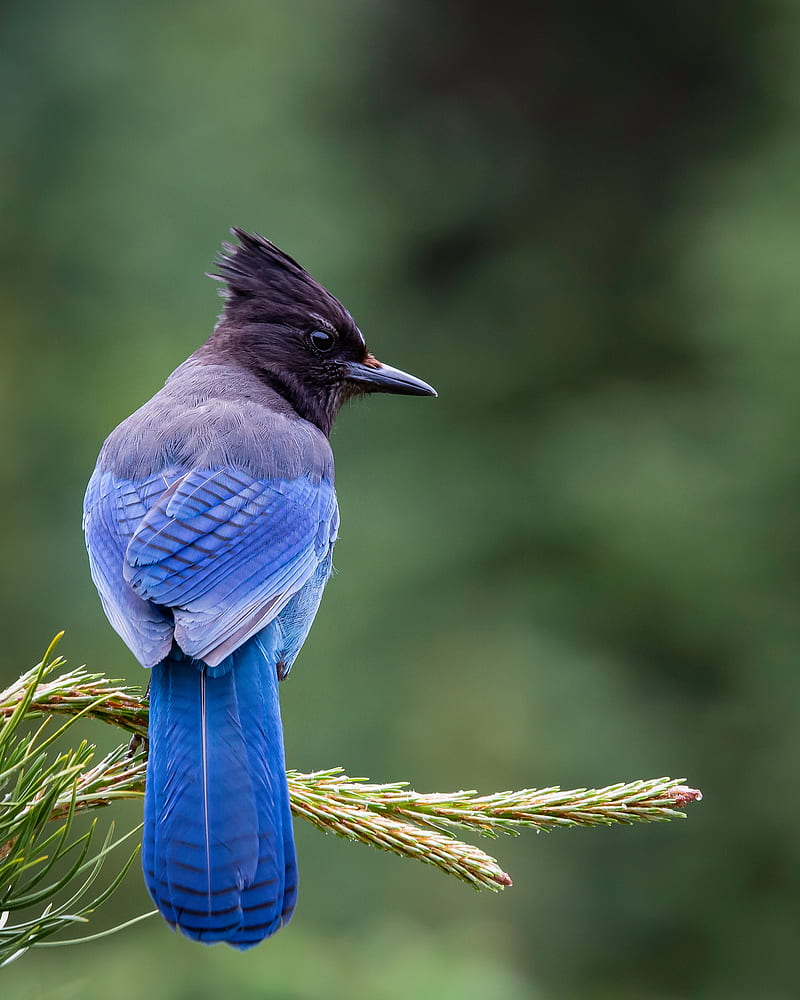The Steller’s Jay is a striking bird that belongs to the corvid family, along with crows, ravens, and magpies. It is native to western North America and the mountains of Central America, and is the only crested jay west of the Rocky Mountains. It is named after Georg Steller, a German naturalist who first described it in 1741.

The Steller’s Jay has a black head and crest, and a dark blue body with variable amounts of white markings, depending on the subspecies. There are 16 recognized subspecies of the Steller’s Jay, showing different combinations of black and blue on the crest, head, and body. The largest and darkest race is found on the Queen Charlotte Islands off British Columbia.

The Steller’s Jay inhabits pine-oak and coniferous forests, from sea level to high elevations. It is a common and conspicuous bird in wilderness areas, but also adapts well to human-altered habitats, such as campgrounds, parks, and backyards1. It is often seen in pairs or small groups, foraging for seeds, nuts, berries, insects, eggs, and small animals. It also visits bird feeders, where it may compete with other birds for food.

The Steller’s Jay is a smart and gregarious bird, with a loud and harsh voice. It can produce a variety of sounds, including imitations of other birds, animals, and human noises. It is especially good at mimicking the calls of hawks, which it may use to scare away predators or competitors1. It also communicates with its mates and allies through subtle body language, such as raising or lowering its crest.
The Steller’s Jay breeds from March to June, depending on the location. It builds a cup-shaped nest of twigs, moss, and mud, usually in a conifer tree. The female lays 3 to 6 eggs, which are greenish or bluish with brown spots. The male helps to incubate the eggs and feed the young. The chicks fledge after about 16 days, and stay with their parents for another month or so.

The Steller’s Jay is a beautiful and fascinating bird that adds color and life to the forests of western North America. It is not threatened by extinction, and has a large and stable population. However, it may face some threats from habitat loss, fragmentation, and degradation, as well as from predators, parasites, and diseases1. Therefore, it is important to protect and conserve its natural environment, and to appreciate its presence and role in the ecosystem.





